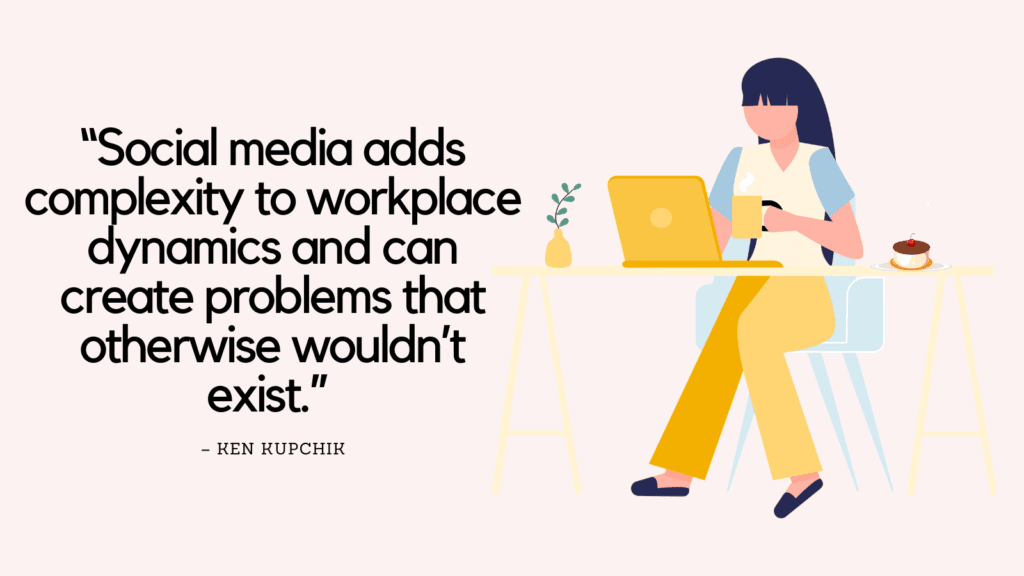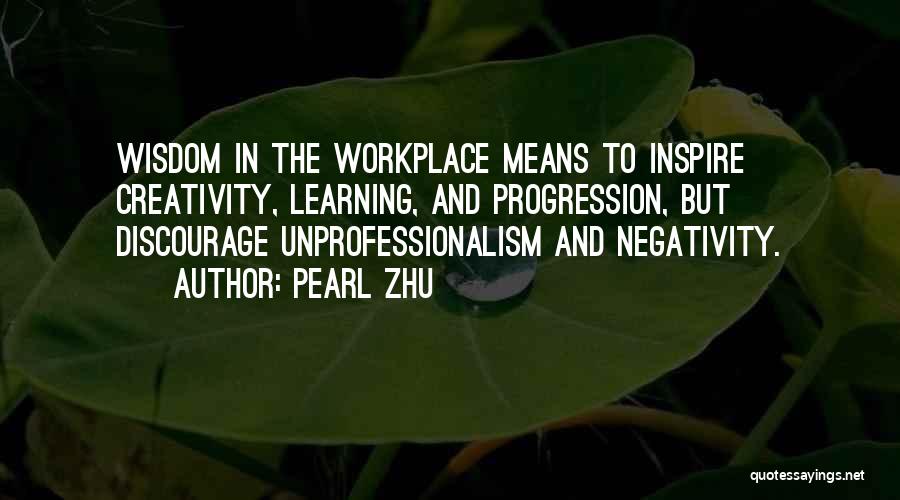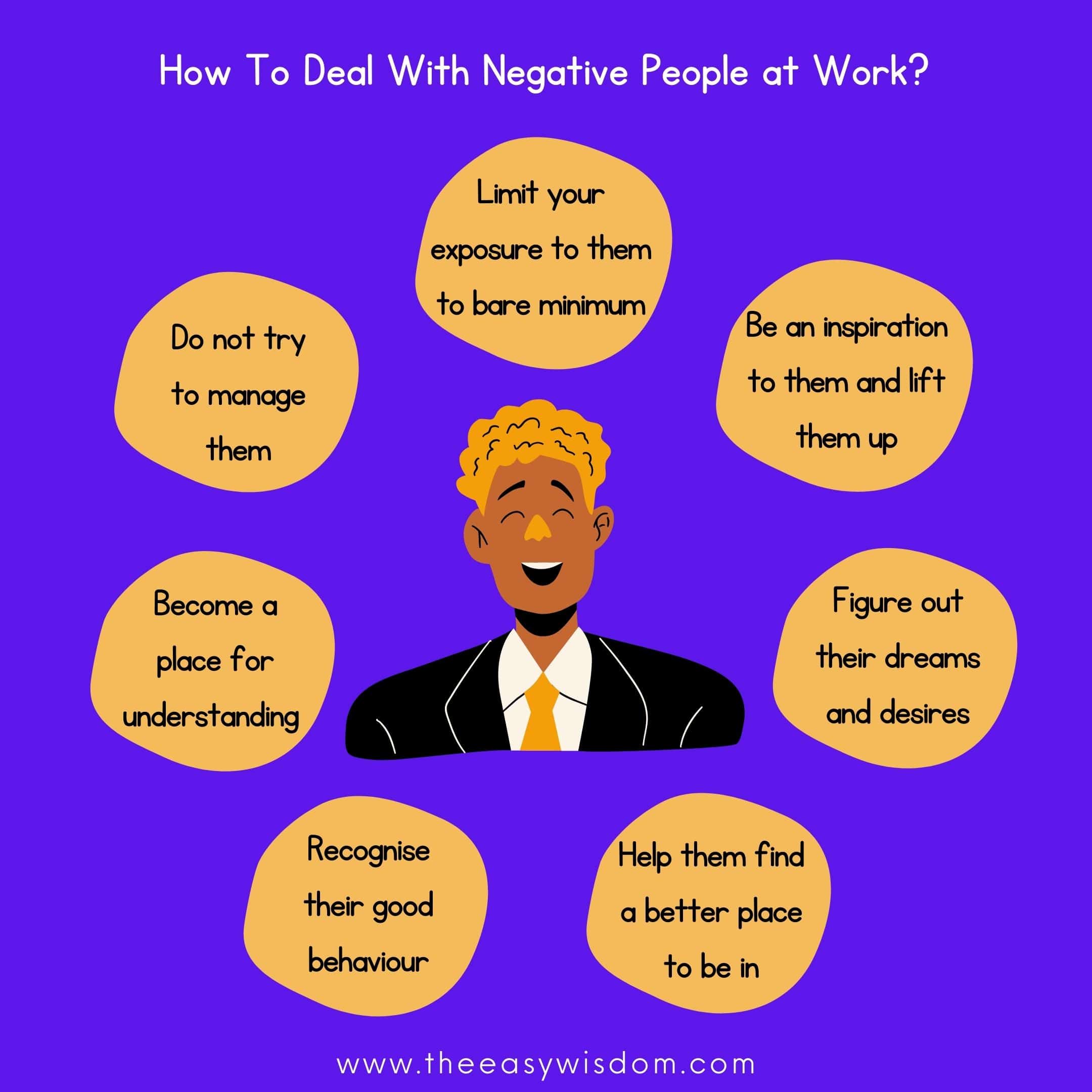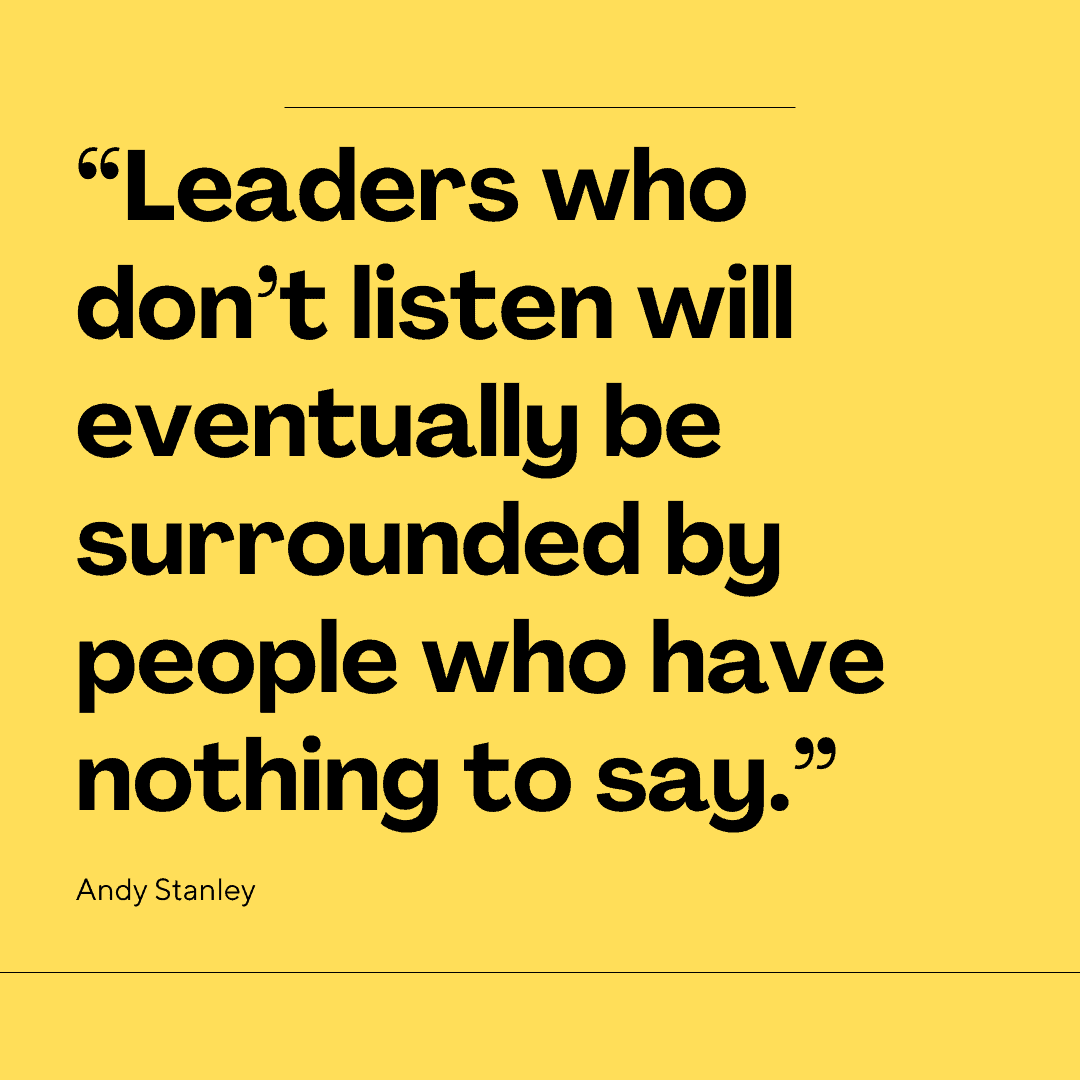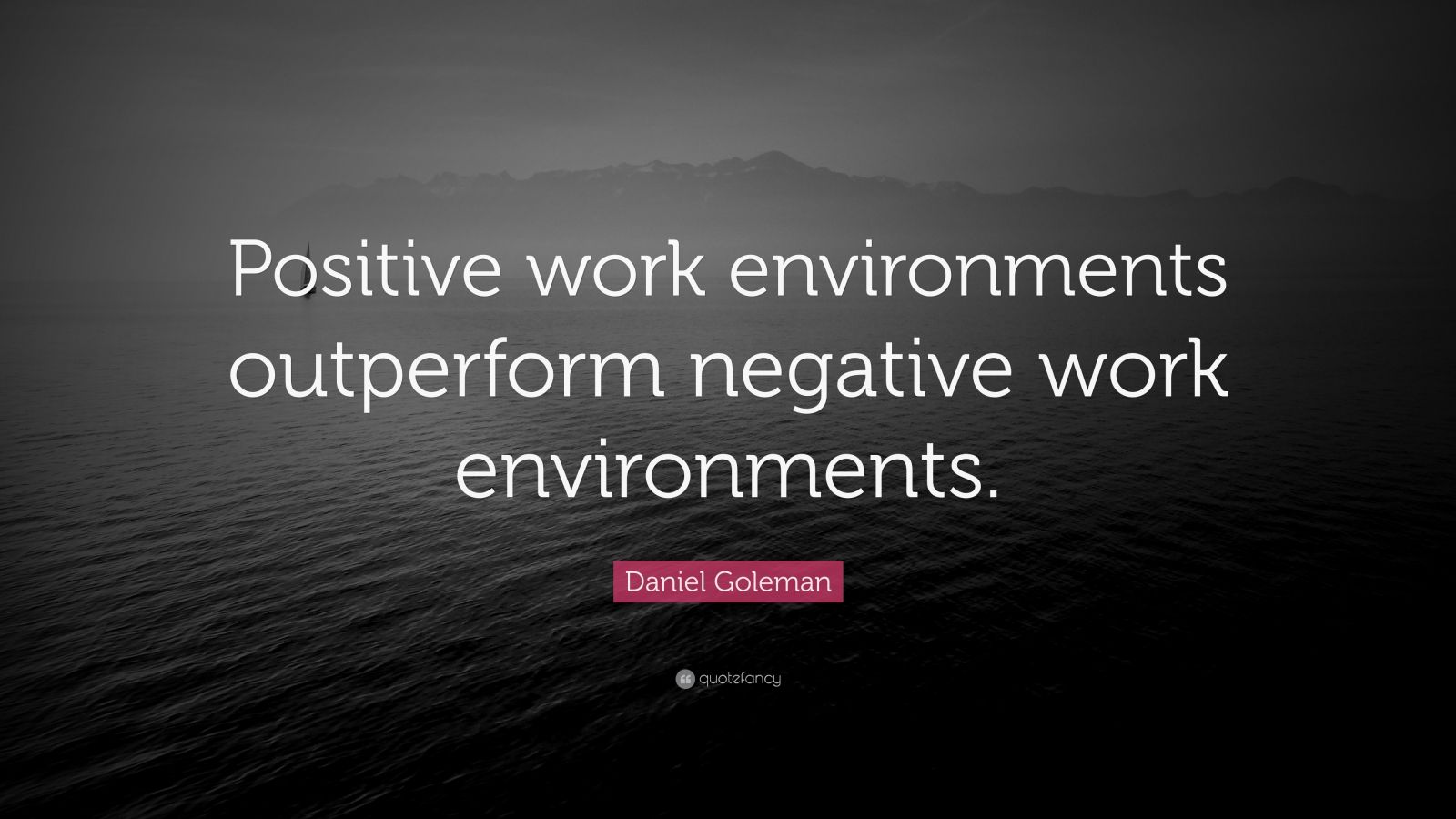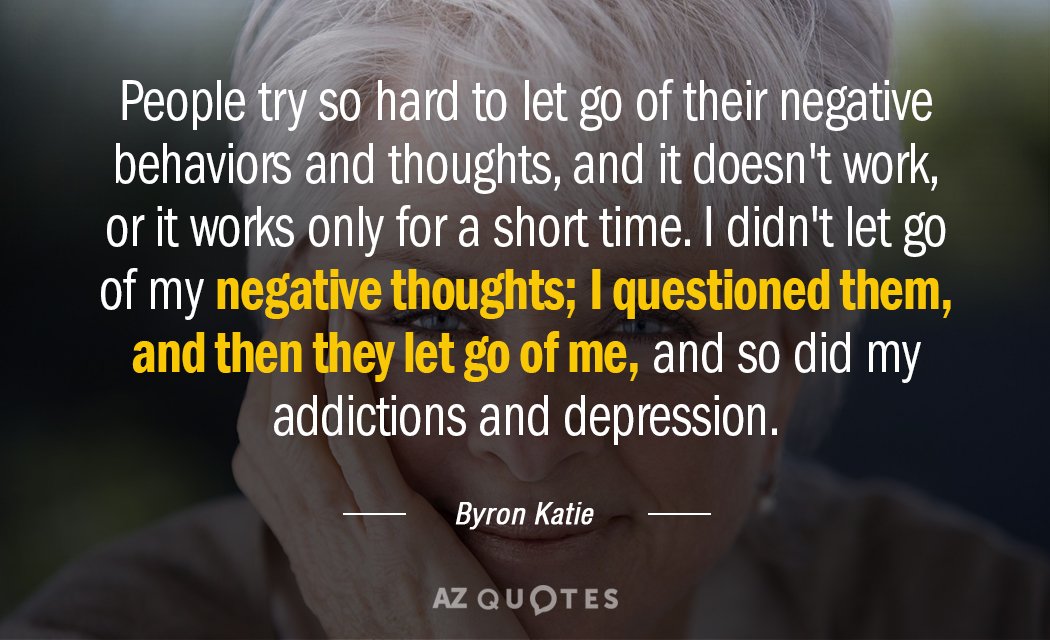Negativity In The Workplace Quotes

The break room buzzes with a low hum. It’s not the hum of productivity, but rather a quiet murmur, laced with sighs and the clinking of mugs. Outside, the sun streams, but inside, a cloud seems to hang over the office air, a cloud woven from complaints and criticisms.
This atmosphere, fueled by negativity in the workplace, is more common than we like to admit. While a certain level of stress and frustration is natural, consistently negative attitudes can severely impact employee morale, productivity, and the overall success of an organization.
The Ripple Effect of Pessimism
Workplace negativity isn't just about grumpy coworkers. It's a pervasive force that can manifest in various ways, from subtle digs to outright hostile behavior.
It can create a toxic environment where employees feel undervalued, stressed, and disengaged.
The American Psychological Association, in its annual Work and Well-being Survey, consistently highlights stress and lack of support as major contributors to workplace dissatisfaction.
Common Culprits: Quotes That Sting
Often, negativity is spread through seemingly innocuous, yet subtly undermining, statements. These quotes, repeated often enough, can become ingrained in the workplace culture.
Here are some examples:
"That's just how things are done here."
This phrase stifles innovation and discourages employees from suggesting improvements.
"It'll never work."
It immediately shuts down new ideas and fosters a culture of pessimism.
"That's not my job."
This demonstrates a lack of teamwork and willingness to help colleagues.
Statements like these, while seemingly minor, contribute to a decline in morale. Each negative remark acts like a tiny crack in a foundation, weakening it over time.
A Gallup study found that employees who feel their opinions don't matter are significantly less engaged and productive.
The Impact on Productivity and Well-being
The consequences of unchecked negativity are far-reaching. Decreased productivity is a key concern.
When employees are constantly exposed to complaints and criticisms, their focus shifts from their work to managing the negativity around them.
This leads to reduced efficiency, increased errors, and missed deadlines.
Beyond productivity, negativity significantly impacts employee well-being. Constant exposure to a toxic environment can lead to stress, anxiety, and even burnout.
Employees may experience difficulty sleeping, reduced appetite, and a general sense of unease. This, in turn, can lead to higher rates of absenteeism and turnover, costing companies significant resources.
Cultivating a Positive Environment
Combating workplace negativity requires a proactive and multifaceted approach. Leadership plays a crucial role in setting the tone and fostering a positive work environment.
Leaders must be visible, approachable, and willing to listen to employee concerns.
Establishing clear communication channels and providing opportunities for feedback can help address issues before they escalate into larger problems.
Practical Steps to Foster Positivity
Here are some tangible steps that organizations can take:
- Encourage open communication: Create a safe space for employees to share their thoughts and concerns without fear of retribution.
- Recognize and reward positive contributions: Acknowledge and appreciate employees' efforts and achievements.
- Promote teamwork and collaboration: Encourage employees to work together and support one another.
- Provide training on conflict resolution: Equip employees with the skills to handle disagreements constructively.
- Address negativity promptly and effectively: Don't let negative behavior fester; address it directly and professionally.
Remember, building a positive workplace is an ongoing process, not a one-time fix. It requires consistent effort and a genuine commitment from all members of the organization.
By focusing on creating a supportive and encouraging environment, companies can reap the rewards of increased productivity, improved employee well-being, and a stronger bottom line. It's about transforming those negative quotes into positive affirmations, fostering a culture where employees feel valued, respected, and empowered to thrive.

